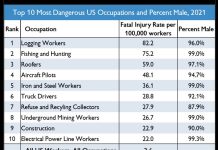Here’s the latest reader question, along with my reply!
Jimmie asks: Hey Eric, what do you think of opposed diesel engines now under development by Achates power and to be tested later this year in California by Tyson Foods and WalMart in Peterbilt tractor trailers? Could this be the “engine of the future” as they claim?
My reply: If these engines can deliver on their emissions promise – or even half of them – it could, indeed, be revolutionary. Salvationary, actually. The greatest threat to diesels – heavy duty and passenger vehicle – is Uncle’s regulatory regime. Their high efficiency is negated by their (as Uncle defines them) high emissions. These aren’t actually high – in terms of meaningfully harmful stuff. But that is neither here nor there as regards the compliance issues.
Which brings up the big issue – as I see it: The recent conflation of harmful emissions (at least in volume) with not-harmful byproducts, specifically carbon dioxide. Which is now considered an “emission” – and subject to regulation.
The problem is that any combustion engine, regardless of type, emits C02 as a function of combustion. The only way to “clean up” C02 is to burn less fuel. This regulation of C02 as an “emission” is the means by which all internal combustion-powered vehicles are to be (ultimately) taken off the road.
But I am hopeful there will be pushback – in time for it to make a difference – and before it’s too late.
. . .
Got a question about cars – or anything else? Click on the “ask Eric” link and send ’em in!
If you like what you’ve found here please consider supporting EPautos.
We depend on you to keep the wheels turning!
Our donate button is here.
If you prefer not to use PayPal, our mailing address is:
EPautos
721 Hummingbird Lane SE
Copper Hill, VA 24079
PS: Get an EPautos magnet (pictured below) in return for a $20 or more one-time donation or a $5 or more monthly recurring donation. (Please be sure to tell us you want a sticker – and also, provide an address, so we know where to mail the thing!)
My latest eBook is also available for your favorite price – free! Click here. 












All the complexity added to big rig diesel engines is a crock…..of bullshit. They have a particulate trap that catches everything of any size but it’s literally “smoke and mirrors” in that it can catch the particles to the point of the trap being full and then you have to change to a new trap. No, that’s ridiculous since it wouldn’t work. Once it reaches a point some sensors tells the computer, then it starts dumping the trap.
At highway speeds it’s done over an approximate time that involves traveling a couple miles or a bit more.
Anyone ever been behind a big rig when it “cleans” the trap. What it is doing is simply saving the particulates to be dumped in a confined space. It’s about as illogical as it can be. Instead of being spread out over a few hundred miles, it’s now “burned” with extra fuel and nobody wants to be behind one when it happens unless you get off on really dense diesel exhaust. Burn more fuel to clean a trap that has to be dumped anyway. Only something like the EPA could come up with such a ridiculous scenario.
Only a stupid, uninformed and clueless bureaucrat could come up with ELD too. You must take a 30 minute break in the first 8 hours and then be down for 10 hours after driving for 14 hours. The trucking bidness is losing drivers left and right because of it and the public has to pay for increased costs due to it. It’s all done for safety and that’s the very thing it is not.
Is this the engine in question?
http://achatespower.com/our-formula/opposed-piston/
“The engineers and scientists started Achates Power in 2004 with the audacious idea that innovation and modern technology could transform the proven and record-setting two-stroke opposed-piston engines of the past into the clean and efficient engines of the future.”
Well, -10 points right there for heavy use of buzzwords and minimal use of engineering specificity. Not seeing anything other than “new and improved!” on their website. I certainly hope they can crack the 2-stroke OP Diesel nut, as otherwise, I see Diesels in OTR trucking becoming stifled by the emission control encrufting mandated by Uncle (and Mutti, and Auntie, and…). 2-Stroke Diesels were quite common prior to the Emission Age of the 2000’s. Names like Detroit (“Driptroit”, “Green Screamer”) Diesel, Fairbanks-Morse, and Tilling-Stevens of the UK to drop a few. And they were quite light and efficient for their time.
As for the opposed-piston-Diesel technology that preceeded the new hotness…the main problem was, where to put the crankshaft(s)? If at the end of each bank of pistons, the engine was too wide or tall. If they used on crank and pushrods/bellcranks, same problem, just a bit less of it. However, a company in England did figure out a way around the “too wide/tall” problem…
http://www.oldengine.org/members/diesel/rootes-listerts3/ts3.htm
Tilling-Stevens (bought out by the Rootes Group) came up with a heavy hauler OP Diesel back in the 60’s. 3 cylinders, 6 pistons, each with a massive rocker arm outboard of the piston, with a crank below. Individual throws per piston. This OP Diesel was not too wide, the crank-below and rockers arrangement allowed it to be pretty compact.
It was a very efficient engine design IMHO, and thinking well out of the box for Tilling-Stevens/Rootes Group. With “new and improved” injection technology, it might be just the ticket.
Oh yeah, there was the old Junkers Jumo 205 AIRCRAFT Diesel engine…
https://en.wikipedia.org/wiki/Junkers_Jumo_205
Good stuff, Crusty – thanks!
These engines are very interesting, from a technical perspective. But – like you – I wonder about the regulatory aspects. Especially now that carbon dioxide is considered an “exhaust emission” by Uncle. That’s the Real Killer… not of the “environment,” but of our way of life, via regulatory fatwa.